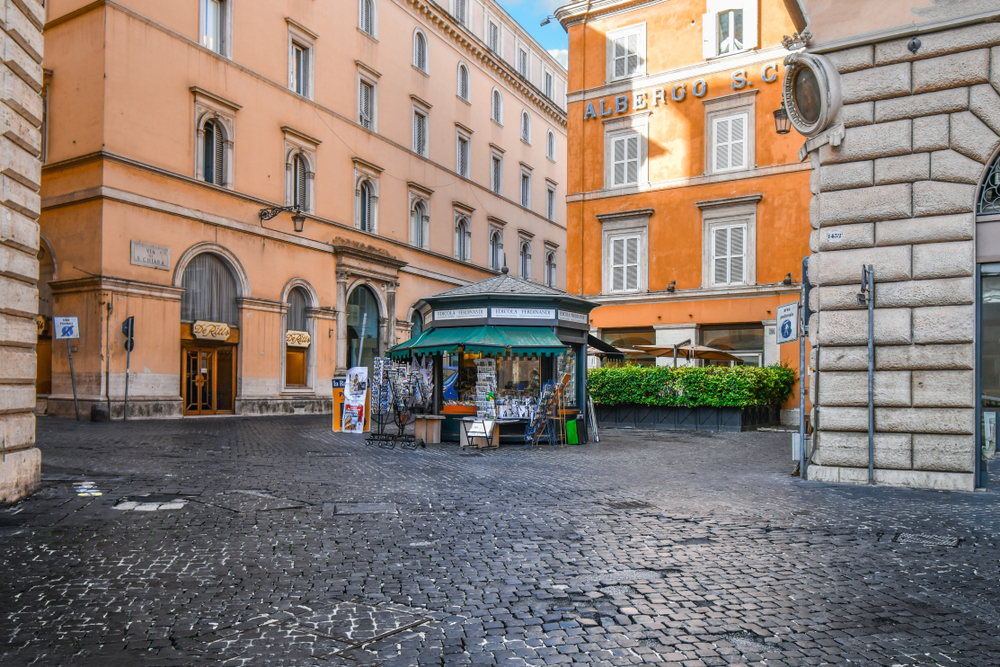Italians have little confidence in journalism. This much was revealed in a recent Reuters Digital News Report which showed that in 2020 only 29 percent of Italians trusted their media.
Concerningly, the report also pinpointed a further decline in this figure compared to the previous year, as has been the case for several years in a row now.
The COVID-19 crisis, which hit Italy particularly hard, has only aggravated this situation further. Confidence in newspapers has been further undermined by the media’s inability to provide accurate and contextualized daily data on the virus. In a long joint investigation, debunking websites Facta News and Pagella Politica also demonstrated the negative impact that fake news is having the Italian media system.
However, some newspapers in Italy have managed to buck this trend and stand out for their ability to provide trusted, quality journalism. These national and – more often – local or hyperlocal media outlets have managed to withstand the economic impact of the pandemic and improve their relationship with readers, creating a much-needed model of local journalism for the country.
Bucking the trend
One of the smallest newspapers that have made the most of the new situation is L’Ora del Pellice, a quarterly print magazine telling in-depth stories from Val Pellice, a small valley in the northwestern region of Piedmont that is home to just over 18,000 people.
The magazine’s editor-in-chief, Daniele Arghittu, told the International Press Institute (IPI) that “the COVID-19 pandemic has highlighted how a slow, precise, and accurate journalistic approach is the most valuable service we can provide our readers”.
L’Ora del Pellice adheres to the “Slow Journalism” philosophy and relies heavily on a community comprised of their paying readers. Aside from some branded content and marginal consultancy work, most of the newspaper’s revenue comes from subscriptions and membership, a closer form of affiliation to the readers’ community.
In their March issue, reporters barely touched on the COVID-19 crisis, which was just emerging at that point, but the June issue devoted around 200 pages to investigations and long-form articles explaining how the virus had affected the valley’s territory.
“The pandemic has shown us that our business model works well and represents at least some part of the future of this profession”, Arghittu concluded. “Investing in the community of readers and the territory pays off more than clicks and instantism.”
Model of local journalism
A similar success story can be found in Bergamo, a city in the alpine region of Lombardy that was one of the regions most affected by the virus in the world. Thanks to a very rigorous approach in data management launched before the pandemic, the editorial staff of L’Eco di Bergamo – a Catholic daily newspaper that has been reporting on the area since 1880 – was ready to explain what was happening on the ground in a rigorous and analytical way from the get-go.
They were rewarded with an all-time high in the number of copies sold and website traffic.
“During the pandemic, the enormous potential that data journalism has – even for local affairs – emerged,” Isaia Invernizzi, the editorial staff’s leading data journalist, said. Invernizzi told IPI that “the quality of our work at such a delicate time has translated into an increase in readers and, above all, into a greater and deeper interaction between the public and the editorial staff. Readers have given us suggestions and reported new stories, becoming true sources”.
Isaia Invernizzi won the prestigious DIG Award for his data investigations during the pandemic, and Eco di Bergamo’s story even ended up becoming the subject of a profile in The New York Times.
“Building trust”
Today, Isaia Invernizzi works with a well-known national online outlet, Il Post. Founded in April 2009, Il Post drew inspiration from some of the most respected U.S. newspapers. It has, slowly but steadily, turned into one of the most visited news sites in Italy as well as one of the most reliable.
Until 2018, Il Post relied almost exclusively on advertising, before moving to a subscription model similar to that of The Guardian. A subscription to Il Post guarantees the same access to articles, but without advertising and with access to special newsletters.
The pandemic represented a turning point for the publication, turning it from a niche publication to a mainstream news outlet. “The key to this success is the reliability, credibility and accuracy that we have always put first”, editor Luca Sofri told IPI. “At a time when an information frenzy reigned, our expertise and attention to quality has rewarded us.”
In 2019, around a quarter of Il Post’s revenues came from subscriptions. By the end of 2020, this figure will be around or just over 40 percent, Sofri said.
“The great success for us has been the so-called retention. That is, a large proportion of those who subscribed during the pandemic remained subscribers even at the end of the first wave. We built trust.”
Sofri concluded by saying that “Il Post’s long-term goal is to continue to work as we have done so far. It seems to me that the road to good journalism is now paved in Italy, too.”
- Click here to read more from IPI’s new reporting series Media Freedom in Europe in the Shadow of Covid



